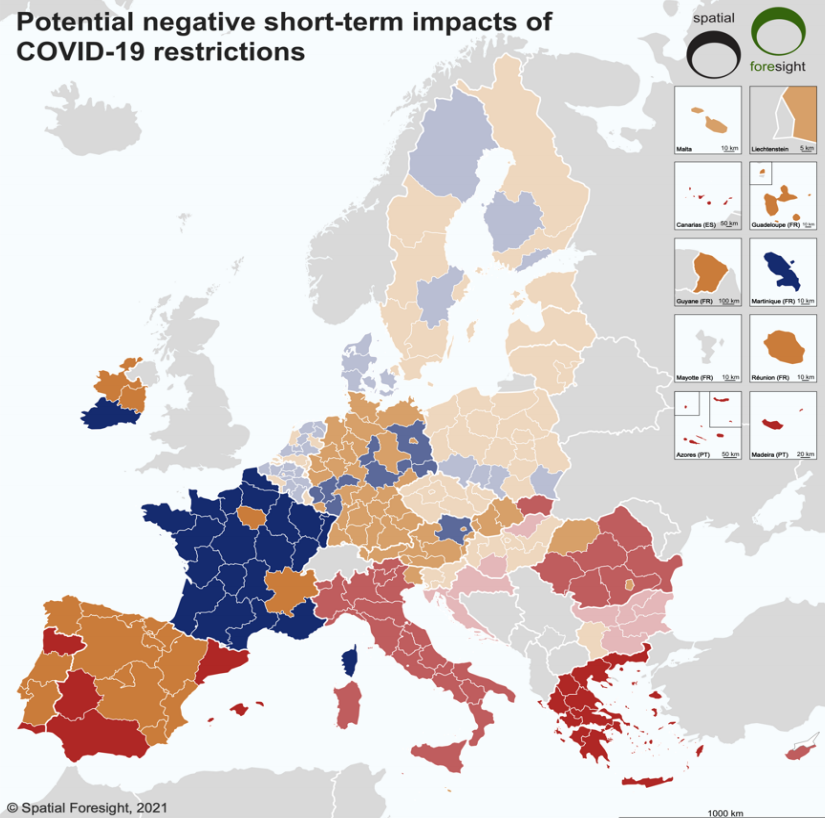The European Union relies on an array of bodies and committees to advise on all aspects of policymaking. Two of the five EU institutions, the European Economic and Social Committee (EESC) and the Committee of the Regions (CoR) play an important, however underestimated role. This is primarily because the impact they have is not visible to the public. They work together with local and regional actors connecting these to high-level ones. This collaboration produces meaningful work, which is however ultimately implemented by the central institutions, such as the European Commission or the Council. This article will take one of these institutions, the CoR, to demonstrate why it is crucial to monitor them and understand the extent of their impact on policy.
Most people not knowing what is happening in the Committee on the Region doesn’t mean its policy work is less important.
And once you know what’s happening there, it gives you plenty of new options for advocacy.
The function of the Committee of the Regions
Despite this lack of recognition, the CoR does have vital functions. The Committee must be consulted whenever the European Commission or Council of the European Union introduce proposals that will have an effect on the regional or local level. Overall, 70% of EU legislation has direct regional and local impact. Additionally, the CoR adopts recommendations on draft EU laws and also proposes new policies on the basis of local and regional experience.’ It can also propose new laws and present issues on the EU agenda. It is safe to say therefore that the CoR has vital functions that can effect meaningful change.
Benefits of monitoring the Committee of the Regions
Public affairs professionals face the challenge that a lack of resources exist to allow for effective monitoring of the Committee of the Regions. This means that the contributions they make to policy processes are largely ignored and therefore potentially deemed irrelevant. In actual fact, this committee works together with actors on international national, regional and local level. This makes it one of the few institutions that has an intricate understanding of how to shape policies effectively. They connect top-down policymaking with bottom-up policymaking.
The importance of this approach to policymaking- focusing on connecting local and regional actors to international ones- is not widely recognised when it comes to EU policy. This approach is also perhaps what makes high-level actors and institutions dismiss the central role of the CoR. Enacting meaningful policy changes on a lower level does not result in big, visible results in the public eye.
Similarly, if you look at a pond, you may spot the larger fish before the smaller ones. But that does not make the smaller fish any less important. Remove these, and your water starts to turn brown, as the ecosystem starts to fail. Remove policy work on the regional and local levels, and your high-level policy cannot function. The Green City Accord, discussed in the next paragraph, is an appropriate example of this analogy.
The Green City Accord – an example of effective policy work
This agreement provides a good example as to why the Committee of the Regions should be monitored more closely. In September, the EC and the CoR celebrated 73 new signatories to the Green City Accord, which commits cities to five ambitious environmental protection goals to be met by 2030. This collaboration relies on the advocacy of the CoR to get local leaders to make this pledge. The result of this is that local actors commit to high-level actors (The EC), but also to actors on the same level (other signatories).
The CoR is thus affecting organic, sustainable change by implementing the same climate change policy through EU cities and still providing local leaders with freedom and flexibility to create this how they see fit. Additionally, it creates multi-level governance, facilitating cooperation with- and accountability of political actors. The Green City Accord, a visible, widely circulated policy, ultimately relies on the commitment and cooperation of local actors to implement the initiative on the lower level.
The EU Regional and Local Barometer
Over the past two years, the COVID-19 pandemic has taken over most aspects of our lives. This is also true for EU policy, in which the pandemic and its aftermath have remained at the center of policymaking. Last year, during the second wave of the pandemic in Europe, the Committee of the Regions published the EU Annual Regional and Local Barometer, which focuses on the impact of the pandemic and the subsequent challenges it will bring in the following year. This year’s Barometer, released only last week (12 October), addresses many of the issues that 2022 will contain, especially the twin challenge of recovery from the pandemic whilst doing this in a sustainable, long-term-objective focused manner.

The document answers a variety of questions, including the socio-economic state of regions; the ability to integrate digital transition; the role Brexit will have in impacting regions, and the challenges and opportunities for European democracy in a post-pandemic world. The CoR also includes fact-based analyses on which it bases concrete policy recommendations on all levels of governance, from cities and regions to countries and institutions.
This report is one of many examples that show how the Committee of the Regions develops effective and sustainable policy. By monitoring the CoR and the work they produce, public affairs professionals can have a wider understanding of the EU policy landscape. They can also communicate and cooperate with other actors more effectively, and because of this improve their own work.
Investing your time into monitoring the CoR does not mean taking time out of your day. All policy documents produced by the Committee of the Regions can be found on our platform, Policy.Insider.AI, together with a variety of other institutions. You can stay up to date on any new policy developments through a simple and quick search of keywords, and you can set daily alerts and receive emails on any important updates. Sign up for a free trial today!
This article was originally published in English. Translations have been generated automatically and may be incorrect.


